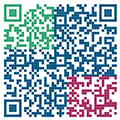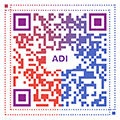张烈:弥合与创新,数字包容视角下的社会服务创新研究与实践(中英文)

12月15日,2022年“一带一路”青年创意与遗产论坛以线上线下结合方式举办。论坛由联合国教科文组织、中国联合国教科文组织全国委员会、长沙市人民政府和南京市人民政府共同举办。来自中国、泰国、哈萨克斯坦、尼日利亚等44个国家的约90名青年围绕论坛主题开展研讨交流。清华大学无障碍发展研究院副院长、美术学院交互媒体美术设计研究所所长张烈,受邀参与论坛并做主旨演讲(以下为中英文演讲内容)。
弥合与创新:数字包容视角下的社会服务创新研究与实践
张烈
Bridging and Innovation: Research and Practice of Social Service Innovation from the Perspective of Digital Inclusion
Lie Zhang
各位领导、专家、国际友人:
Respected Leaders, Experts, Dear Friends,
应邀出席“一带一路”青年创意与遗产论坛活动,我深感荣幸。青春孕育无限希望,青年创造美好明天,青年是时代的先锋。在全球新冠疫情肆虐的当下,本次论坛以“促进跨文化对话和应对全球挑战的青年创造力”为主题,必将有助于世界青年加强交流,激发创意,积极面对新时代的发展和挑战。
I am honored to be invited to International Youth Forum on Creativity and Heritage along the Silk Roads. Youth contains infinite hope; youth creates a better future; young people are the pioneers of the times. In the context of the COVID-19 epidemic, this forum, themed “Youth creativity to promote intercultural dialogue and tackle global challenges”, will certainly encourage young people around the world to promote exchange, spark creativity, and actively face the development and challenges of the new era.
数字技术的进步,改变了人们的生存方式。我们的生活、工作、艺术、娱乐、商业、教育、传播等社会生活的方方面面都因为数字化的进程而发生了翻天覆地的变化。然而,数字化的春风并没有吹到每一个角落,由于不同国家和地域的经济社会发展水平不一,不同个体的经济能力、受教育程度和身体状况等也都存在较大差异,从而产生了信息获取障碍、数字贫困和数字排斥等“数字鸿沟”问题。数字鸿沟成为了一种新的全球性不平等现象,对世界文化的多样性也提出了挑战。
Advances in digital technology have changed the way we live. Every aspect of our social life, work, art, entertainment, business, education, and communication has been radically changed by digitalization. But the warm breeze of digitalization doesn’t reach every corner. Due to the varied economic and social development in different countries and regions, and the large differences in economic competence, education and physical condition from individual to individual, the “digital divide” featuring hindered access to information, digital poverty, and digital exclusion has appeared. The digital divide has become a new global inequality and a challenge to the world's cultural diversity.
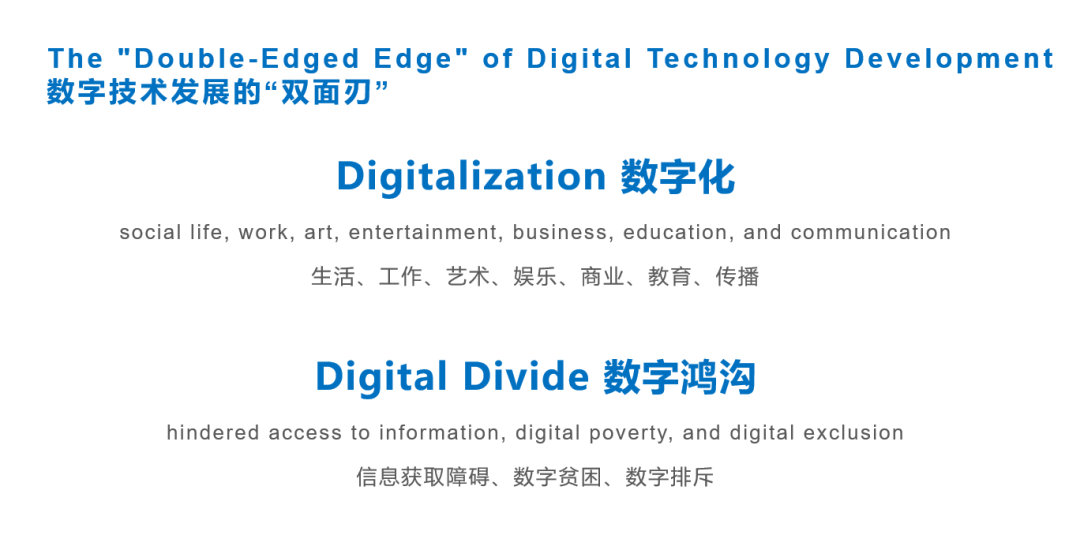
早在2000年的时候,《全球信息社会冲绳宪章》就提出了“信息社会包容”原则,即“任何人、任何地方都应从信息社会中受益,任何人都不应被排斥在外”。于是,数字包容的概念进入了全球视野并引起了广泛关注。数字包容是数字鸿沟的相对概念,是弥合数字鸿沟的行动和过程。数字包容的目标是采取各种措施来确保所有人都有平等的机会和适当的技能,从而在数字技术和系统中受益。数字包容强调技术的获取与使用、强调社会活动的参与、强调对弱势群体的关注、强调社会壁垒的突破,其价值和意义在于正视数字鸿沟的存在,并在广泛的实践中逐步探索弥合鸿沟的可行方法。
Early in 2000, Okinawa Charter on Global Information Society introduced the principle of “information society inclusion”, that is, “everyone, everywhere should be enabled to participate in and no one should be excluded from the benefits of the global information society”. Since then, the concept of digital inclusion has entered the global view and attracted wide attention. Digital inclusion is the relative concept of the digital divide. It is the action and process of bridging the digital divide. The aim of digital inclusion is to take measures to ensure that all people have equal access to and appropriate skills to benefit from digital technologies and systems. Digital inclusion emphasizes access to and use of technology, participation in social activities, attention to disadvantaged groups, and breaking through social barriers. Its value and significance lies in confronting the digital divide and gradually exploring feasible ways to bridge the divide through extensive practices.
中国《“十四五”规划和2035年远景目标纲要》讨论了“数字中国”的建设目标,总结了数字中国建设的主要成就。其中之一就是“支撑社会服务发展普惠均衡”,这充分体现了数字包容理念在中国的实践探索和广泛落地。以数字化技术推进包容性社会的建设,也已成为新时代中国的重要努力方向。建设数字包容的当代社会,同样也是我们每一位青年科研工作者的社会责任所在。
“Outline of the 14th Five-year Plan and Vision 2035” of China discusses the construction goal of a “Digital China” and summarizes the main achievements of the construction of a digital China, one of which is “supporting the universal and balanced development of social services”. This fully embodies the practical exploration and extensive implementation of digital inclusion in China. The use of digital technology for the construction of an inclusive society has also become an important direction of work for China in the new era. Building a digitally inclusive present-day society is also a social responsibility to be shouldered by each of us young researchers.
清华大学无障碍发展研究院作为清华大学在无障碍和包容性研究领域的跨学科科研机构,科研人员结合各学科优势和所长,在利用数字技术手段,解决数字服务提供的均等化问题、以及面向特殊群体的数字服务等方面也进行了积极的探索。下面我从公共文化服务的均等化和面向障碍人群的数字帮扶几个方面向大家做一个简要的介绍。
The Institute for Accessibility Development of Tsinghua University is an interdisciplinary research institute of Tsinghua University in the field of accessibility and inclusion research. Combining the strengths and expertise of various disciplines, researchers there have actively explored the use of digital technology for solving equalization of digital service provision and digital services facing special groups. Next, I will give you a brief introduction to the equalization of public cultural services and digital support for people with disabilities.
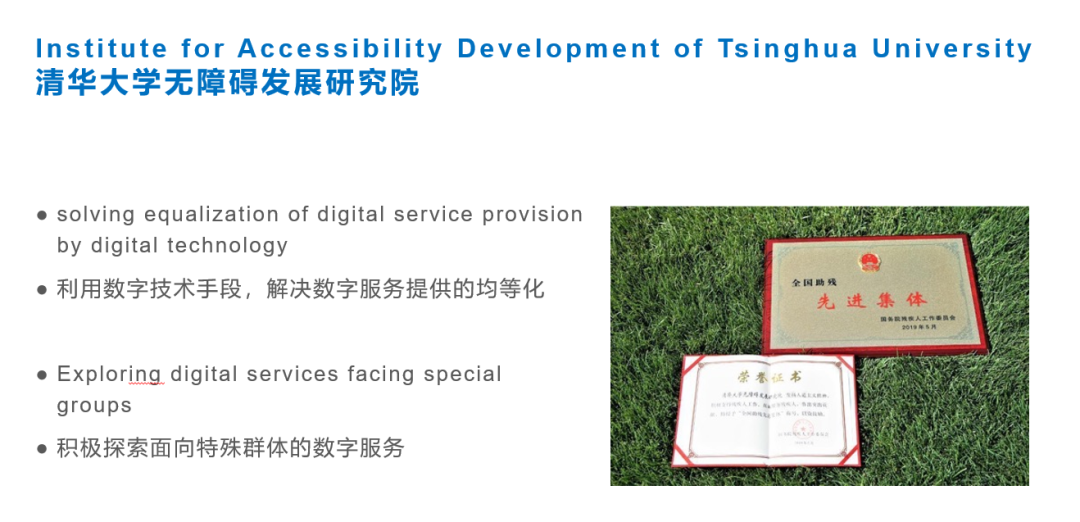
在公共文化服务领域,目前国内还存在着不少短板和问题。由于经济社会发展水平的制约,城乡之间、区域之间的公共文化服务发展水平还存在较大差距。习近平总书记指出,要推动公共文化服务标准化、均等化,坚持政府主导、社会参与、重心下移、共建共享,完善公共文化服务体系,提高基本公共文化服务的覆盖面和适用性。
With respect to public cultural services, we are still seeing many shortcomings and problems in China. Restricted by the level of economic and social development, there is still a large gap between urban and rural areas and between regions in terms of the level of development of public cultural services. General Secretary Xi Jinping has pointed out that it is necessary to promote the standardization and equalization of public cultural services, adhere to government leadership, social participation, the shift of the focus downwards, joint construction and sharing, further improve the public cultural service system, and expand the coverage and applicability of basic public cultural services.
数字化是提升公共文化服务效能,实现公共文化服务标准化、均等化的重要手段和措施。今年国家印发了《关于推进实施国家文化数字化战略的意见》明确到“十四五”时期末,基本建成文化数字化基础设施和服务平台,形成立体覆盖的文化服务供给体系。到2035年,建成全面共享的国家文化大数据体系,让中华文化全景呈现,中华文化数字化成果全民共享。
Digitization is an important means and measure to enhance the effectiveness of public cultural services and to achieve standardization and equalization of public cultural services. As clearly specified in Opinions on the Implementation of Digital Strategy for National Culture, by the end of the “14th Five-Year Plan”, we should basically complete the cultural digital infrastructure and the service platform, and form a three-dimensional cultural service supply system. By 2035, a comprehensive and sharing national cultural data system will be built, allowing a panoramic view of Chinese culture to be presented and the achievements of the digitalization of Chinese culture to be shared by all.
各地的文化遗产地、博物馆、文化馆等机构是国家实现公共文化服务的重要阵地。为了达到全民共享的目标,公共文化服务领域如何利用数字化手段减少城乡和地域差异,提升公共文化产品和服务的品质,是研究院和美术学院数字文化联合研究团队的主要研究方向之一。
Cultural heritage sites, museums, cultural centers and other institutions are important positions for the coverage of public cultural services in the country. To achieve the goal of sharing by all, the digital culture joint research team of the Institute and the Academy of Fine Arts should lay an emphasis on how to reduce urban-rural and regional differences and improve the quality of public cultural products and services by means of digitization.
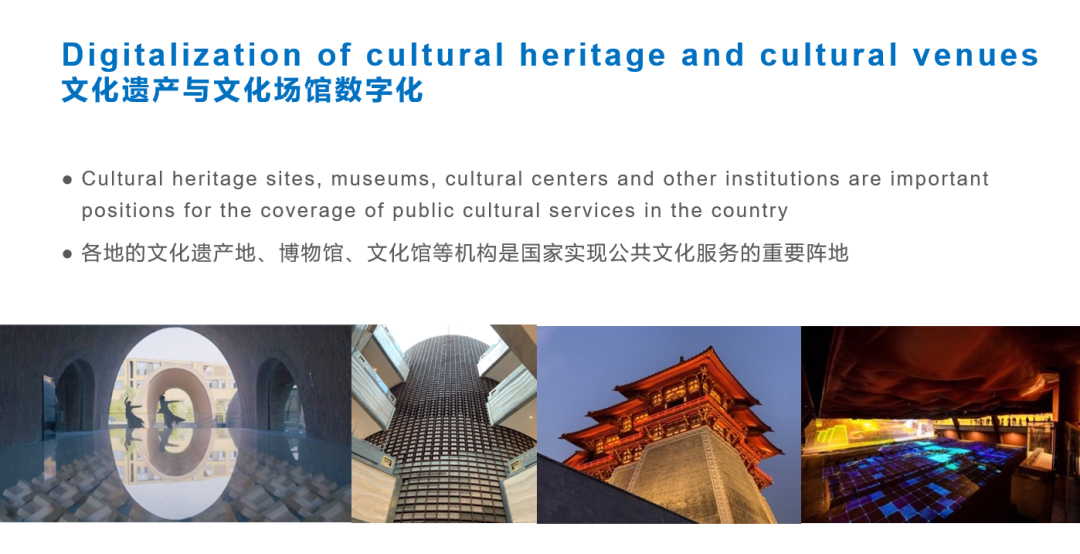
比如通过数字化手段增强这些机构的服务能力和传播能力。数字文化团队牵头编制《国家文化大数据体系——县区文化馆数字体验技术要求》《文化体验设施通用技术要求》以及《智慧博物馆 展陈与导览数字化技术要求》等技术标准,有助于公共文化机构的数字化基础建设和服务的标准化和均等化。
A measure to consider is enhancing the service and communication capabilities of these institutions by digital means. Technical standards like “The national cultural big data system—technical requirements for digital experience in county and district cultural centers”, “General technical requirements for cultural experience facilities”, and “Technological requirements for digitalization of exhibition and guide in smart museums” prepared under the leadership of the digital culture team contribute to the standardization and equalization of digital infrastructure and services of public cultural institutions. 目前我国备案博物馆数量已经达到五千多家,但是和发达国家相比仍有一定的差距,地域分布上的不平衡问题尤为突出。为了改善博物馆资源在地域分布上的不平衡问题,数字文化研究团队还和清华艺术博物馆共同提出了“镜像博物馆”新一代数字博物馆的理念。力图利用新的数字化和沉浸式技术,线上线下相融合,实现立体式和智能化的文化遗产数字课堂教学的新模式,让边远地区的同学,也能够通过数字化手段深入体验和学习各地丰富的博物馆资源。
At present, the number of museums on record in China reaches 5,000, which, however, is relatively far behind developed countries; and there is the particularly prominent problem of unbalanced geographical distribution. To address the imbalance in the geographical distribution of museum resources, the digital culture research team and Tsinghua University Art Museum have jointly proposed a new generation of digital museums— the “Mirror Museum”. This is proposed to achieve online-offline integration with new digital and immersive technologies, to build a new 3D and intelligent model of digital classroom teaching of cultural heritage, so that students in remote areas may also experience and learn about the rich museum resources of different places by digital means.
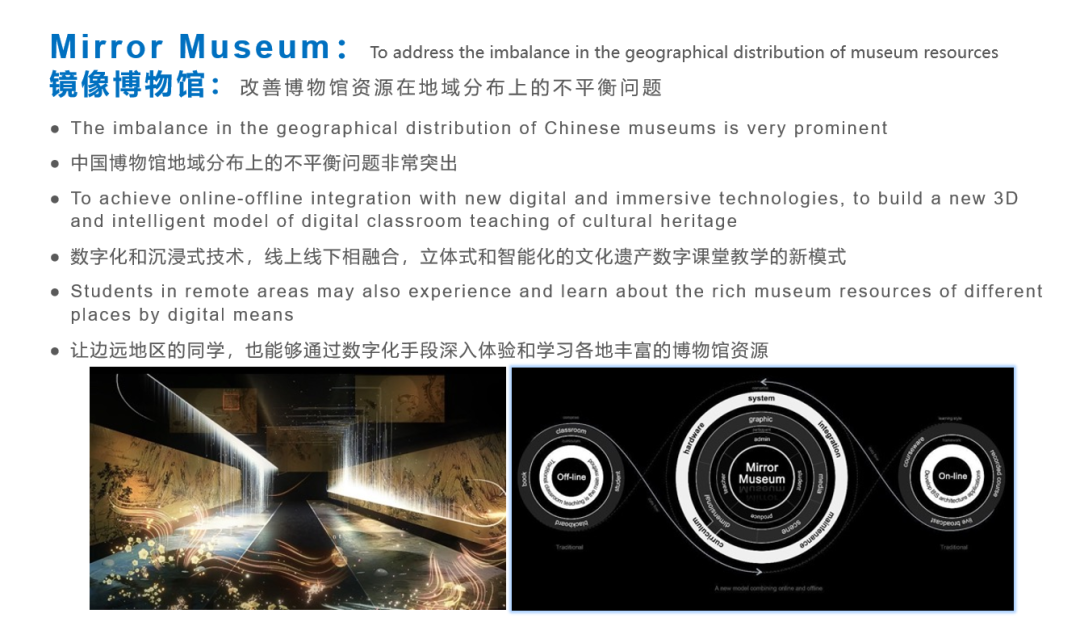
数字文化馆和镜像博物馆的推广与普及,可以打破时空壁垒,帮助欠发达地区弥合文化和数字鸿沟,促进文化和数字资源传播平衡,实现数字包容;另外,将文化资源进行数字化之后的线上传播,可以让更广泛人群更有效的利用文化和遗产资源,帮助他们获得更多发展机会。
The promotion and popularization of digital cultural museums and mirror museums will break the barriers of time and space, help less developed regions bridge the cultural and digital divide, strike a balance in the transmission of cultural and digital resources, and achieve digital inclusion. Moreover, online dissemination of cultural resources on top of digitization may make cultural resources more effectively accessible to a larger population, helping them to seize more opportunities for development.
2022年国际博物馆日的主题是“博物馆的力量”,通过“实现可持续发展的力量”“数字化与可及性创新的力量”“通过教育进行社区建设的力量”三个视角探讨博物馆为我们带来积极变化的潜力。数字媒体艺术的创新应用,已经成为了大多数博物馆促进传播和教育,扩大影响力,更好的实现其社会服务责任的重要手段。数字文化团队近年来完成了孔子博物馆、2019北京世界园艺博览会中国国家馆、故宫博物院大高玄殿数字展厅、洛阳博物馆、洛阳应天门遗址博物馆等博物馆的数字媒体艺术创作,以及中希文化交流年线上展、2022冬奥会数字博物馆云展厅等线上国际文化交流项目,取得了广泛的社会影响力,成为行业的重要示范力量。
The theme of International Museum Day 2022, "the power of museums", focuses on efforts to achieve sustainability, innovations in digitalization and accessibility, and contributions to community-building through education. The innovative use of digital media art has become an important tool for most museums to promote communication and education, expand their reach, and better fulfill their social service responsibilities. In recent years, the digital culture team has completed digital media art creation for museums such as the Confucius Museum, the China Pavilion at the 2019 International Horticultural Exhibition in Beijing, the Digital Exhibition Hall of Dagaoxuan Hall of the Palace Museum, the Digital Exhibition Hall of Luoyang Museum, and the Yingtianmen Site Museum, as well as online international cultural exchanges such as the online exhibition of Sino-Greek Cultural Exchange Year and the cloud exhibition hall of the 2022 Winter Olympic Games Digital Museum. These have won the team extensive social influence and an important benchmark position in the industry.
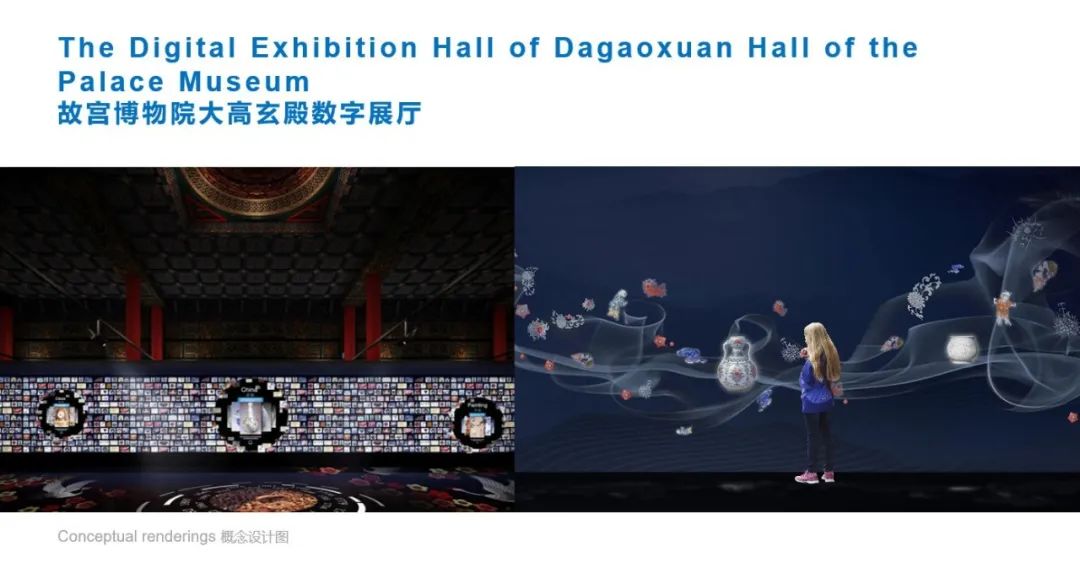
艺术是一种国际化的语言,而媒体艺术也越来越成为大众所喜闻乐见的文化艺术表达手段。如何通过媒体艺术的应用打破数字障碍、语言障碍,让来自全中国、乃至来自全世界的观众,都能够感受和体验到中国文化的魅力,是我们一直思考和努力的方向。我们会充分考虑到目标观众的分层,强调扩大数字包容的范围,缩小不同观众群体之间的数字鸿沟,通过艺术+科技的手段,最大程度地吸引观众的注意力,激发观众的兴趣和好奇心,让尽可能多的个体和组织,都能够更好的获取文化资源、实现公共文化的普及化和均等化,也进而能够更好的促进优秀文化遗产的保护和传承,以及跨文化交流与传播。
Art is an international language. Media art is increasingly becoming a popular means of cultural and artistic expression. We have always been working on breaking the digital and language barriers through the application of media art, so that audiences from all over China, and even from all over the world, can experience the charm of Chinese culture. We will take full account of the levels of our target audiences, emphasize broadening the scope of digital inclusion, and narrow the digital divide between different audience groups. By combining art with technology, we will attract the audience's attention as much as possible, earn their interest and curiosity, and enable as many individuals and organizations as possible to better access cultural resources, achieve the universal and equal provision of public culture, and thus better promote the protection and transmission of excellent cultural heritage, as well as cross-cultural communication and dissemination.
而如何让盲人等残障和特殊群体获得更好的公共文化服务?如何弥合特殊群体的数字鸿沟推动信息无障碍?无障碍研究院和清华大学未来实验室、计算机系的老师们在此也做出了不懈的努力并取得了显著的成果。
Also, how to let the blind, the disabled and other special groups access better public cultural services? How to bridge the digital divide for special groups to enhance information accessibility? Researchers at the Institute for Accessibility Development, Tsinghua Future Laboratory and the Department of Computer Science and Technology of Tsinghua University have also made unremitting efforts and achieved remarkable results here.
据世卫组织2020年报告显示,全球约有2.53亿视觉受损人口,包括3600万全盲患者。我国的视力残疾人数超过1700万,根据中国教育部2019年年鉴数据,仅有大约4万视力残疾儿童涵盖在国家教育系统中。许多视力障碍患者由于残疾、出行条件、经济条件、学校容积等原因无法接受义务教育。他们在日常生活中最大的两个困难就是出行和信息获取。
According to the 2020 report by WHO, there are approximately 253 million visually impaired people worldwide, including 36 million who are totally blind. In China, there are over 17 million people with visual disabilities, but only about 40,000 children with visual disabilities are covered by the national education system according to the 2019 yearbook of the Ministry of Education. Many people with visual impairment are unable to receive compulsory education due to their disabilities, travel conditions, economic conditions, and the limited capacity of schools. Their two biggest difficulties in everyday life are travel and information access.
研究院管委会委员、清华大学未来实验室主任徐迎庆教授带领团队开展的盲人计算机项目是该领域的一个突破性成果,力图改善盲人对信息和知识的获取手段。这款设备通过凸凹点阵,以触觉形式传达图像信息,设备具有盲文显示、图形显示、文本盲文输入、语音辅助、声音输出和线上搜索等功能。研究团队还与北京盲人学校合作开展了数学示范课,以及盲文数字化教科书设计等研究实践,获得了积极的反馈和验证。
The “computer for the blind” project led by Prof. Xu Yingqing, Vice President of the Institute and Director of Tsinghua Future Laboratory, is a breakthrough in the field, seeking improvement in access to information and knowledge for the blind. The device conveys image information in the tactile form with a convex-concave map. It features a braille display, tactile graphs display, text & braille input, voice assistance, audio output and online searching functions. The research team and Beijing School for the Blind have also jointly developed the Demonstration Class Design and Digital Braille Textbook Design, which received positive feedback and validation.
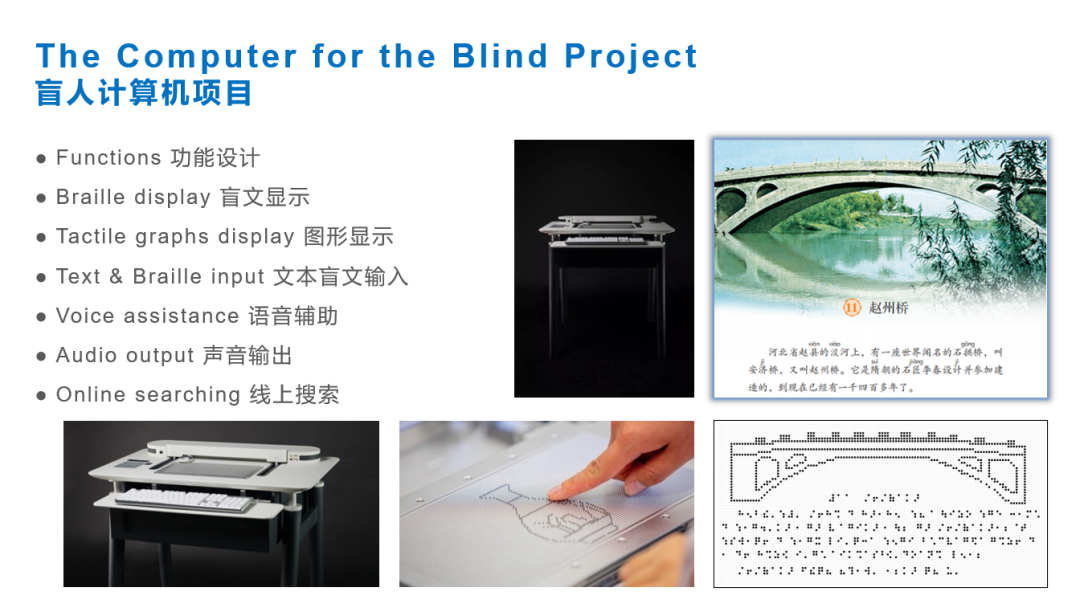
研究院副院长、清华大学计算机系史元春教授带领的团队致力于信息无障碍交互技术和界面的实现,力图赋能视障人士听、说、读、写的能力,将无障碍作为同等重要的目标融入技术研究到界面开发中,提高视障人士信息设备的交互效率,不止造福视障人士,更是整个社会。 VIP Board,是一款为视障群体设计的智能屏幕键盘,VIP Board可以在不改变用户输入行为的前提下,为用户自动校正输入错误的字符,减少用户主动纠错65%。Virtual Paving 虚拟盲道系统,通过深度摄像头感知和识别路面,规划出可行走的路径,然后通过多模态反馈告知盲人用户如何行走。虚拟盲道可以有效应对现实生活中的盲道铺设成本高、范围有限,以及经常被障碍物占用等问题。我们第一个虚拟盲道系统通过肩部振动以及音频指示方向,为可以为全盲的视障群体提供独立导航能力,该系统已经可以让盲人在各种形态的路径上来行走。之后,团队又设计了针对视弱群体的Light Guide,通过帽檐上的灯带指示行走方向。据统计,近90%的视障群体都有微弱光感能力。实验表明,Light Guide可以帮助视障群体更高效、更平稳、更准确地转向目标方向、完成行进路程。
Professor Shi Yuanchun, from the Department of Computer Science of Tsinghua University, who is also the vice president of our institute, is working on applying information barrier-free interactive technology to user interface, with the goal to empower the visually impaired to listen, speak, read and write. These efforts are rooted into the idea of universal design: Improving the interaction efficiency of information equipment will not only benefit the visually impaired, but also the entire society, especially considering that many of us might lose our sight as we are getting old. First, VIPBoard is an intelligent screen keyboard designed for the visually impaired. VIPBoard can automatically correct incorrectly entered characters for users without changing the user's input behavior, reducing users' active error correction by 65%. Second, Virtual Paving system uses depth cameras to sense and recognize walkable path, and then informs blind users how to walk through multimodal feedback. Compared with physical paving, Virtual paving can effectively deal with the problems of high cost, limited coverage, and unexpected obstacles. Their first virtual paving system use shoulder vibration and audio instructions. This system has already allowed blind people to walk on various forms of paths. After that, they designed Light Guide for the low-vision people, which indicates the walking direction through the light strip on the brim of the hat. As we know, nearly 90% of the visually impaired have weak light perception. Experiments have shown that Light Guide can help the visually impaired to turn to the target direction and complete the journey more efficiently, smoothly and accurately.
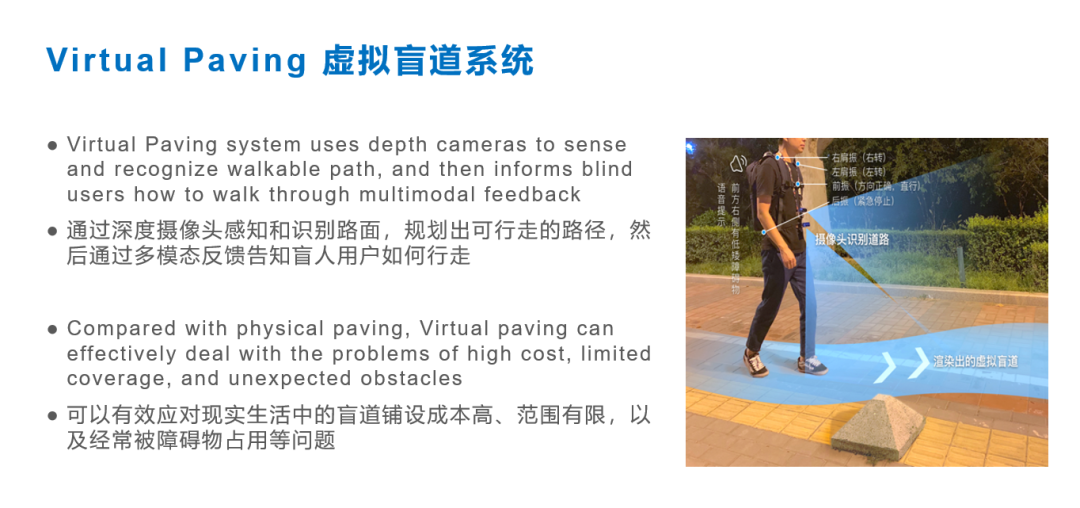
还有一类群体,被称为“星星的孩子”,那就是孤独症儿童。孤独症是较为多发的一种先天广泛性发育障碍,主要症状包括交流障碍和社会交往障碍等。当前,孤独症发病率在全球范围内呈不断攀升趋势。根据2016年发布的数据,我国有超过1000万的孤独症人群,0-14岁儿童的数量超过200万。孤独症至今病因不明,无完全康复案例,患者和家庭常年承受着极大的负担和痛苦,一直广受社会各界的关注。
In addition to those with visual impairment, we also respond to the most urgent needs of individuals with autism. Autism, also referred to as Autism Spectrum Disorder (ASD), is a developmental disorder that can cause significant social, communication, and behavioral challenges. In China, children with autism are referred to as “those from other planets”, given that they all display mild to severe social and communication deficits. Recent studies have identified individuals with autism with an increasing prevalence over the past few years. As reported in 2016, in China there are over 10 million individuals with autism, among whom over 2 million are children and adolescents aged 0-14. We don’t know the exact cause of autism, and we don’t have the cure, either. Autism affects how a person acts, communicates, and learns, and the family are confronted with great challenges, financially, physically, and mentally, for years.
医疗康复领域的专家主要依靠行为干预和教育来改善孤独症患儿的症状。而以互动和信息交流为核心的数字交互技术能否惠及孤独症患儿?能否为改善他们的交流障碍提供帮助?这是无障碍发展研究院孤独症康复研究项目部所一直努力的方向。
As well-recognized by healthcare organizations and professionals, behavioral interventions and special education afford the best opportunity to improve learning, communication, and social skills. In light of digital inclusion, can individuals with autism, their family, and practitioners working with them contribute to and benefit from the digital world? Will technologies based on human-computer interaction deliver benefits to those individuals and bring significant changes in their communication and adaptive skills? Since 2019, we, the autism initiative team at the Institute for Accessibility Development, Tsinghua University, have been seeking to answer those questions.
无障碍研究院联合首都医科大学附属北京安定医院、社会企业恩启共同构建了数据驱动的孤独症数字诊疗服务体系,基于“减少数字落差,创造数字机会,实践数字包容”的理念,从孤独症儿童的生理和心理特征出发,通过创新数字技术,打造以孤独症个体评估数据为基础核心的数字康复服务系统。该体系主要包含:ASD辅助诊断系统、人机交互数字化能力评估工具、AR社交情景课堂、OpenK特教OI管理平台,数字教育资源共建共享云课堂。通过这五个数字包容与无障碍服务技术形成的产品矩阵,孤独症数字诊疗服务体系初步完成了针对孤独症儿童开展数字医疗服务的全流程闭环,即从筛查诊断,到能力评估,到康复干预,再到融合教育,最终实现全纳包容。
With the joint efforts by Beijing Anding Hospital and INGCare the social enterprise, we have developed a digital health system, aiming to make it more efficient and sustainable to provide autism services from diagnosis to treatment. With the vision of “reducing inequalities, providing access, and embracing digital inclusion”, the system has sought to address digital challenges and respond to special needs, both physical and mental needs, of individuals with autism. The digital health system incorporates five components: video-based assistive technology for ASD screening and diagnosis, human-computer interaction system for individualized skill assessment, Augmented Reality virtual social skills classrooms, Open-K organizational intelligence practice management platform, and cloud classrooms for practitioners. With this product matrix, the digital health system responds to the most urgent needs for digital inclusion and accessibility services of individuals with autism and their significant others, as well as streamlining effective delivery of autism services by facilitating early identification, early diagnosis, early intervention, and early inclusion.
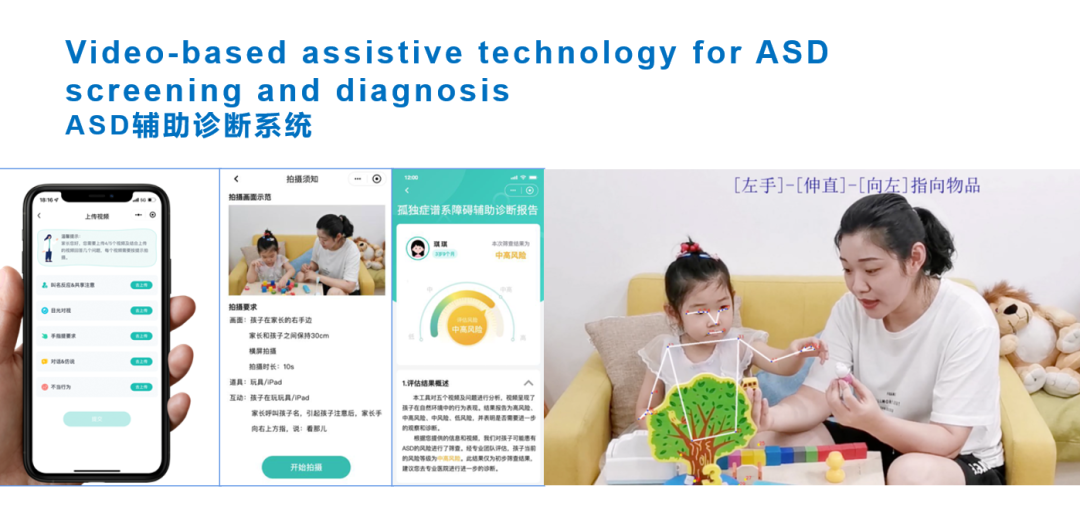
在无障碍领域,清华大学无障碍发展研究院通过跨学科的发展模式,积极利用数字化手段,为在行动、感知等方面存在不便的残障群体服务,服务领域涉及公共政策、法律、设计、技术、产品、教育等方面,通过相关研究和成果转化,解决社会数字包容问题。
With respect to accessibility, The Institute for Accessibility Development (ADI) of Tsinghua University, under an interdisciplinary development model, has employed digital means to serve disabled groups with mobility and perception difficulties. The services cover public policy, law, design, technology, products, and education. The aim is to address the issue of social digital inclusion through relevant research and transformation of results.
当今社会的数字技术快速变迁,但对弱势群体的支持和帮助还远远不够,依据联合国教科文组织的评估,在数字时代,大众需要更高的数字素养才能有效工作、生活、学习和交流,没有这些数字技能的人们会在社会中被边缘化,从数字弱势变成真正的社会弱势。数字技术的发展应当具有温度,温暖每一个人,应当让特殊人群不再特殊;我们需要确保每一个人都能跟上数字发展的潮流,不让任何一个人在数字世界中掉队。在这个不断通过数字技术推动经济增长的时代,让我们携起手来,成为“数字包容”理念的参与者、践行者,共启弥合数字鸿沟、践行数字包容的新征程。
As digital technology today evolves rapidly, support and aid for the disadvantaged are still found insufficient. As evaluated by UNESCO, in the digital era, the public needs to be more digitally literate to work, live, learn and communicate effectively; people without these digital skills will be marginalized in society, reducing from digitally disadvantaged to truly socially disadvantaged. The development of digital technology should warm everyone and should make special groups less special. We need to make sure that everyone keeps up with digital development and that no one is left behind in the digital world. In this era of continuous economic growth driven by digital technology, let's join hands to be participants and practitioners of “digital inclusion”. Together, we will start a new journey of bridging the digital divide and practicing digital inclusion.
让我们共同努力,谢谢大家!
Let's concert our efforts, thank you!
